Hymn Number What??

- See my post: “Running with the Devil 2017.”

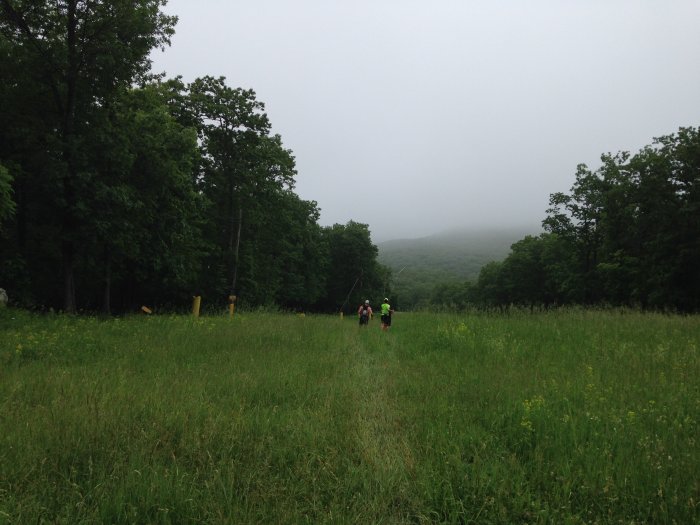
This morning I ran the Running with the Devil trail race in Vernon, NJ, a race I’ve referred to HERE, HERE, HERE, and HERE. This race is a 3 mile course on ski slopes. The first half is uphill with 1,100 feet of elevation gain. The second half is (obviously) all downhill. It’s a timed race with 3, 6, and 12 hour options. I did 3 hours.
I completed my first loop in 47 minutes. While I may have had fanciful heroic dreams of running each loop in less than 45 minutes in order to complete 4 in 3 hours, it became apparent to me quickly on the first loop that the incline of a ski slope is no friend to an injured ankle. So, considering that my ankle was severely injured and required a long recovery, and that I returned to serious trail running just two months ago (It’s hard to build up significant strength for hills in two months after being out of commission for nine months.), I was satisfied with 47 minutes on the first loop.
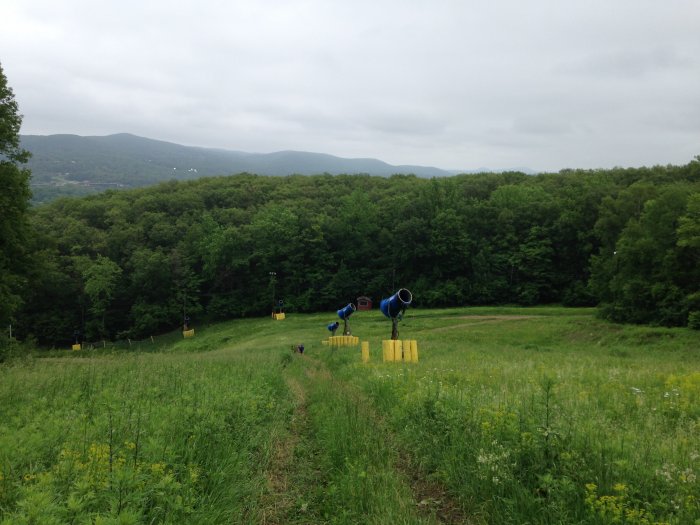
I was a bit slower on the uphill section on my second loop. But I did okay most of the way but needed a few more stops to catch my breath and rest my legs. On this second loop I met Vince, whose real name has been changed for this blog post.
Vince, a man in his early 60s, was sitting on the ground three quarters of the way up the course when I got there. I asked if he was okay. He said his heart rate was sky high (190) and wouldn’t settle down. I asked if he was dizzy or having trouble catching his breath. He said yes to both. There was no first aid out on the course. There was at the base of the slopes. But that was quite a distance away for a guy complaining of a crazy heart rate. So I decided right then to stick with Vince until he got back down to the base to see a medic.
After a few minutes, Vince got up and continued on the course. I stuck with him. We chatted as we walked. We talked about the course. We talked about other races. We talked about trail running. Vince usually carries bear spray when he’s in the woods. He has never sprayed a bear. He did spray an aggressive dog once. As he talked, I figured, as long as he talks, I can tell that he’s okay if he stays coherent.
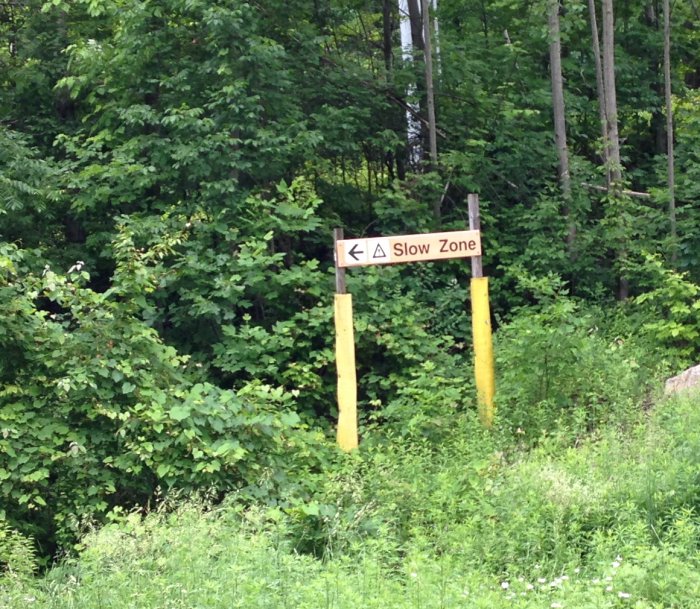
Other runners blew by us now and then as Vince and I slowly made our way down the slopes. Most of these guys and gals were younger people, careening down the inclines over mud and loose stones, making it look easy. One guy, running with his shirt off, was built like a machine and ran that course like he owned the place. Another guy, also with his shirt off, appeared to be in his 60s, was lean and fast and zipped by us like the wind. Vince and I had some discussion about this.
Vince said, “I suppose, with proper training, good nutrition, good sleep at night, it would be possible for someone my age to be able to do this course in under 45 minutes.”
I said, “Yes, and if I could lose another 20 pounds I could probably move a lot faster too.”
He said, “I’d love to be 165 instead of 175 like I am right now.”
I said, “Well, I’m 218 currently.”
Vince glanced over at me. Then he said, “Yeah, you’re a big guy.”
Shut up, Vince.
Loop two took me a little more than an hour.
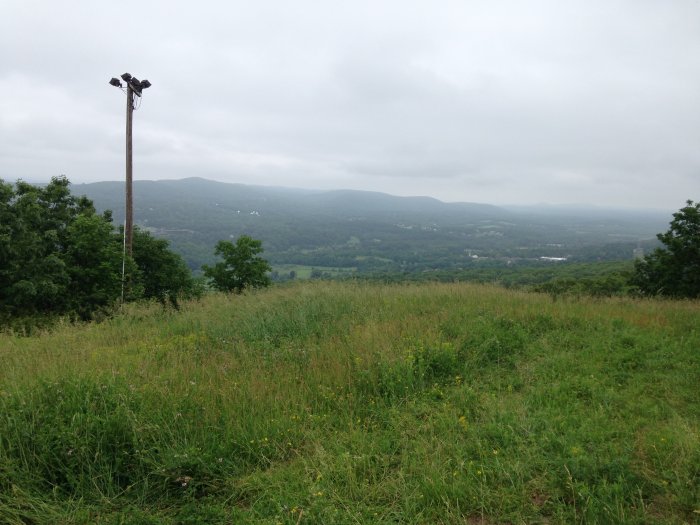
I delivered Vince to the base and into the loving arms of an EMT. Then I started loop three.
This loop was hard. My ankle was hurting. My legs were tired. But I had over an hour to complete the loop before my three hours were up. I pressed on, stopping much more often on the steep parts, running more slowly on the downhill section. Plus, it rained during that loop. The course was getting muddy and slippery. However, the rain felt GOOD! It wasn’t hot, only 70°. But it was humid. (My concern about acclimating to the heat proved to be unnecessary. See HERE, HERE, and HERE.) I’m not sure exactly how long that third loop took me because my phone died on the way down. Therefore I couldn’t check my Strava app.
All in all, the experience was a good one. I’m satisfied with what I accomplished, especially considering my physical limitations and my short training period. In three hours I covered nine miles and had 3,400 feet of elevation gain.
To put a cherry on the top of it all, these two darlings made a surprise appearance to see me when I finished the race. THAT made my day.

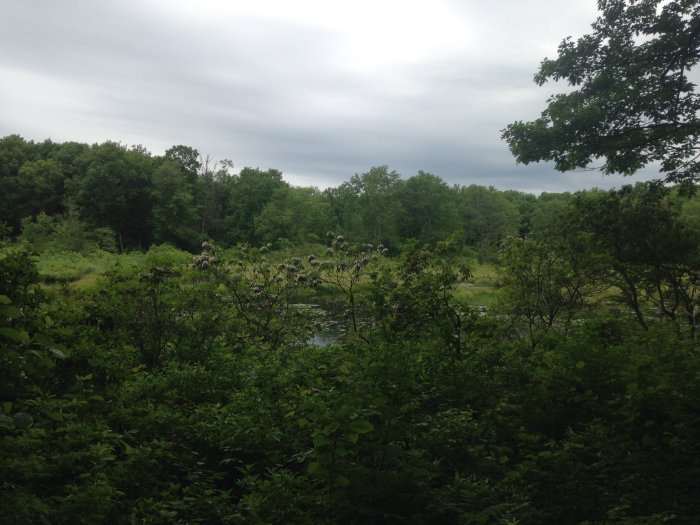
Yesterday was my last run before the Running with the Devil race, which is tomorrow. It was a very good run, my best time yet on the 6 mile yellow blaze loop at Mahlon Dickerson Reservation. I felt stronger on the hills, which is the main thing I need tomorrow while running a 3 mile course with 1,100 feet of elevation gain in the first 1.5 miles.
The last run before a race always brings up the question: Did I train well enough for this race?
The answer is almost always, No. I never accomplish as many training runs as I would like. I never do enough cross training. Most times I hardly do any cross training. I never feel as strong and prepared as I’d like to be.
While I have made significant progress over the past three months, there are things I’m concerned about. My number one concern is my ankle which was severely injured previously and still recovering. The ankle still hurts. It’s still not as stable as it used to be. There risk of injuring it again will always be there. But in addition to the concern for the ankle itself, I have concerns about the effects running with a compromised ankle is having on other parts of my body. These include pain in my lower back, hip, and knee on the opposite side of my body from the bum ankle. I am sure this is because my running form is askew due to compensating for the hurt ankle. I have been working hard to run with good form but the concern remains that I am doing damage to myself.
This all leads me to a bigger, sort of metaphysical question: Should participating races be the driving force behind my running efforts?
Someone in a trail running Facebook group brought up this topic last night. This person said they stopped doing races because they found they were having too many injuries by trying to meet the deadline of a race date. Now he focuses on accomplishing the challenges he wants to do, gives himself enough time to train, and does his challenging runs when he is ready.
This appeals to me. There are long distance courses that I have in mind. I find my thoughts often dwelling on these courses. They excite me more than some of the races I currently have on my calendar. I have one in mind that is 45 miles long. I keep thinking, Wouldn’t it be so satisfying to run this long course, maybe with a friend or two, or maybe just by myself, finish it, and have a sense of achievement? If I wasn’t quite ready when my planned date arrived, or if I encountered injury along the way and needed more time, I could push the date out. This would be better than the pressure of not wanting to miss a race and pushing myself unwisely because of it.
But there’s a drawback for me. I am a procrastinator. The pressure of a race on the calendar, one for which a paid money and there is no changing the date, motivates me. Without that I might slack too much and take too long to reach various goals.
I also enjoy the social aspects of races. There’s energy in those crowds. It’s inspiring to see others out there giving their all. It’s good to be around people with like interests.
At this point I have four races on the calendar between now and next Spring. For sure I will keep them. But I may consider doing fewer races in the future in order to pursue my own personal goals with a little less pressure.

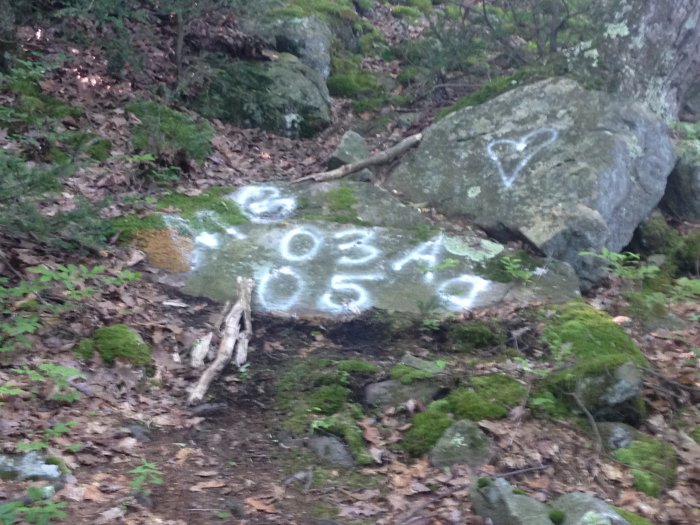
At some point early on Sunday morning while I was running my Tammany Loops (See my post: “Early Morning Tammany Loops”.), during my second loop to be exact, some knucklehead spray painted the above endearment along the red dot trail. Some time between 7:15 and 8:30 AM the deed was done.
I remember what it was like being young and crazy about a girl, “in love,” as they say. I remember writing a girl’s name all over my desk in 6th grade. Come to think of it, I wrote a different girl’s name all over a desk a few years later.
Then I remember an act of vandalism I inflicted upon the unused factory across the street from our house when I was 15. I spray painted letters on one of the doors. They were letters of true love. They were not for a girl. They were for a band.
LED
ZEP
My old neighbor, Mr. Bennett, thought for sure it was someone with the initials “LED” in love with someone else with the initials “ZEP.” He was about 500 years-old, drove a big old station wagon, had a wife who was OCD about washing her hands constantly, and he had a plot of land a few miles down Route 31 where he grew an abundance of vegetables. He was kind enough to give our family plenty of tomatoes and zucchini. I’ll never forget the day he pointed over toward the factory and said to me, “Look at that, Sammy. Must be somebody in love.” I thought, You moron, it’s a band! The best band in the world! Thinking about it now, he probably wasn’t as senile as I took him to be and probably saw me painting the damn door the day before, like a knucklehead.
My family had a Ford Torino in those days. When my stepfather was at work and my mom was occupied with my baby sister, I would take the keys and drive that car, a pukey tan colored boat, up our gravel driveway onto the street, down the Bennett’s driveway and around their house, over and over like it was the Indy 500. Mr. Bennett got a kick out of it. He also seemed to think I was as innocent as a Boy Scout. He never knew that I cut a corner too close and took a chunk of cement off his house with that Torino. (My stepfather took a chunk out of my hide that day though!) Mr. Bennett also did not know how I and my best friend, who turned me on to “LED ZEP” in the first place, used to throw the rocks from the gravel driveway to bust out the windows of that old factory. Sometimes we used our Wrist Rocket slingshots.
But I digress in telling you about what a moron I was as a teenager. All I intended to do with this post was say that there is really no excuse for graffiti in the woods. What is the point?? Or is “MB 03 05 A…(What is that? A backward D?)” a new band I don’t know about? Either way, you got the first letter right: M. For moron. Because if you think the hikers and runners will pause to appreciate your sign of deep and true love, you, my friend, are a moron.